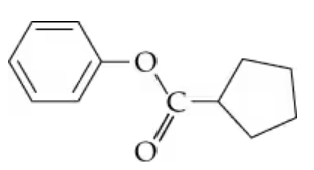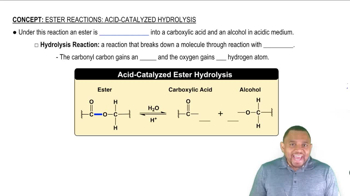Ethyl octanoate is a flavor component of mangoes.
c. Use condensed structural formula to write the balanced chemical equation for the acid hydrolysis of ethyl octanoate.

 Verified step by step guidance
Verified step by step guidance Verified video answer for a similar problem:
Verified video answer for a similar problem:



 1:14m
1:14mMaster Acid-Catalyzed Ester Hydrolysis Concept 1 with a bite sized video explanation from Jules
Start learning